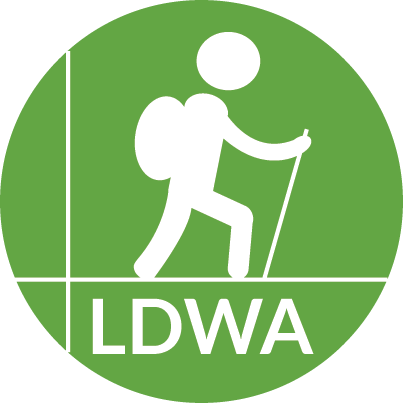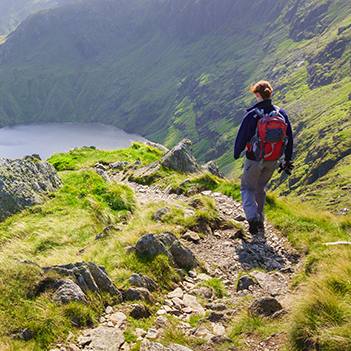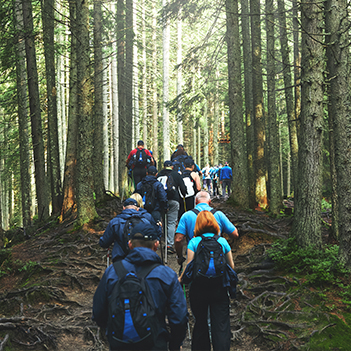Hints & tips for new walk leaders
If you’re new to leading walks here are some suggestions to make the job easier and more enjoyable. Together they are a counsel of perfection, so don’t worry if you don’t manage to tick every one on the list the first - or even the tenth - time you lead! You can use your browser's Print function for a printer-friendly version of this page, or you can download it as a pdf or MS Word doc file.
Preparation
1. Walk the route enough times to know it by heart. That way you’ll be able to walk the route confidently without having to refer to the map. You’ll also have a good idea about timing and be able to modify the walk if you have to. A good final test to set yourself is to walk the route in reverse without looking at the map!
2. Choose your coffee/tea and lunch stops with care. Good locations might be:
- a good viewpoint;
- somewhere near a shop or pub for food, drink and toilets;
- in a wood where there are logs to sit on and enough cover for shade and toilet opportunities.
3. Mark the route clearly on your map. Include your planned stops and some timing notes so you can quickly see if you’re ahead of or behind schedule.
4. Take a basic first aid kit and have some Compeeds (or similar) for newcomers. In extremely hot weather consider carrying some rehydrating salts.
5. Please read the LDWA's policy about dogs on walks and decide whether you need to give any directions about dogs on your walk.
At the start
6. A few minutes before the scheduled start time gather the group together and welcome your fellow walkers. Make a particular point of introducing any new members or visitors.
7. Outline the route and the location of the scheduled stops. People who want to follow the route on their maps will welcome having advance information about the direction, length and terrain of the walk.
8. Check that everyone is carrying enough food and drink, even if there are opportunities to buy these.
9. Check that everyone is carrying or wearing enough warm and waterproof clothing for the weather conditions.
10. Count the number of people on the walk.
11. Remind everyone that it is each person’s responsibility to keep an eye on the leader and those behind them to make sure that they and those behind know the route to follow. This is particularly important with large groups and where the route changes direction. As Leader you need to be particularly aware of this potential problem with larger groups.
12. Say that if anyone suspects that someone has disappeared they should raise the alarm immediately and stop the group.
During the walk
13. Walk at the pace you wish to set. If others walk in front they should keep you in sight or refer to you for directions.
14. At each scheduled break tell everyone how long you will be stopping and when you will set off again. Keep your timings under review and decide if you need to make allowances for a large group or extreme weather conditions.
15. Discreetly check on everyone’s condition during the breaks and modify the pace or route if necessary. Re-count your group before you set off.
16. You do not always need to lead from the front. Walking in the middle of the group can allow you to watch the front and the back at the same time.





